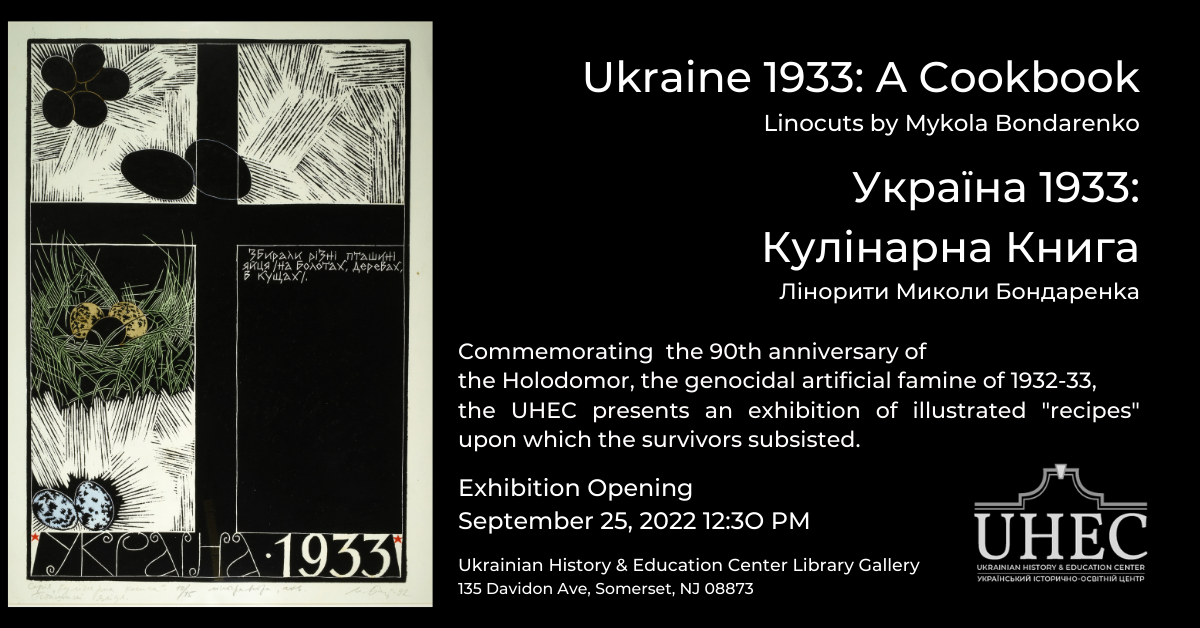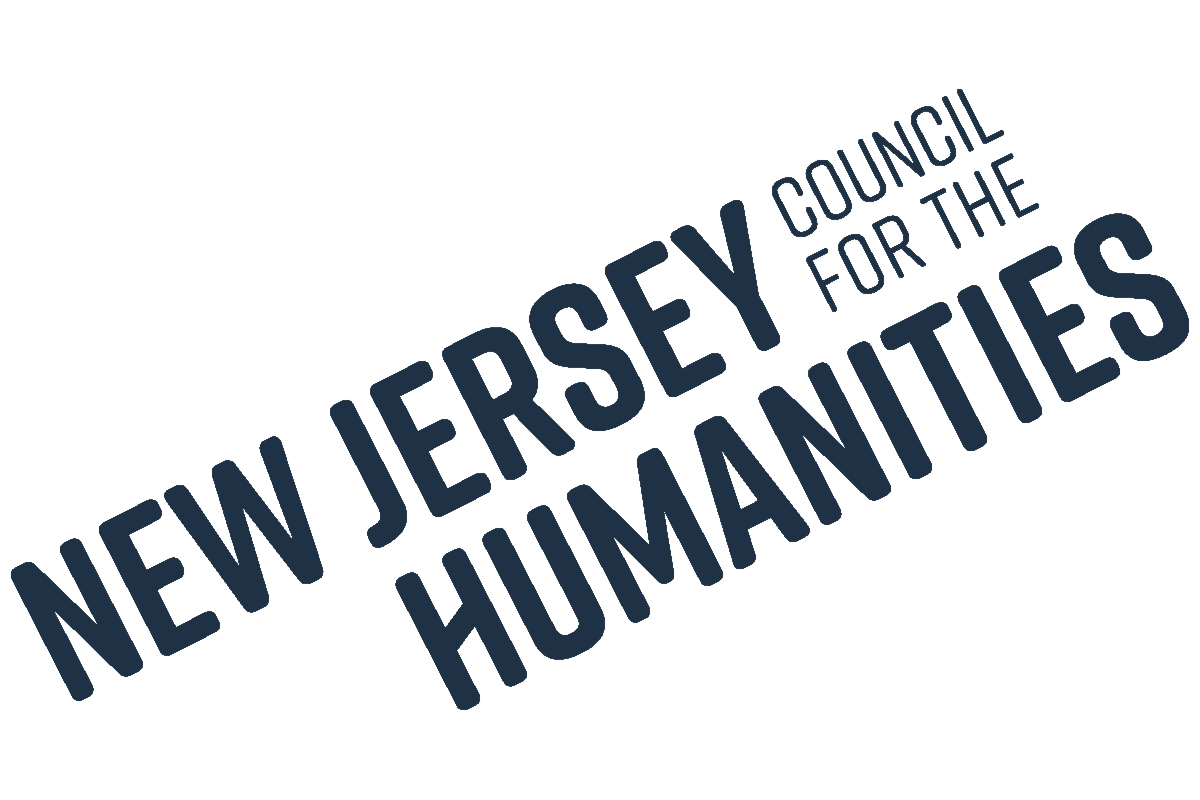Exhibit Opening - Ukraine 1933: A Cookbook Linocuts by Mykola Bondarenko

On view from September 25, 2022 through Spring 2023
Ukraine 1933: A Cookbook
Linocuts by Mykola Bondarenko
As we commemorate the 90th anniversary of the Holodomor, the genocidal artifical famine of 1932-33, the UHEC presents Ukraine 1933: A Cookbook, a series of linocuts created by Mykola Bondarenko, depicting the unbelievable "menu" upon which the survivors of the Holodomor subsisted, from the Patriarch Mstyslav Permanent Collection.
Instead of depicting emaciated peasants or other scenes of suffering and death, Bondarenko presents the various plants and animals that people were forced to eat in order to survive. They are depicted in stark black and white lines set against a black cross shape (simultaneously recalling both the Christian Cross and a windowpane), and are accompanied by a short text identifying the plant or animal and describing how it was prepared fro consumption. The effect is chilling: one cannot help but be horrified by the idea of being forced to eat grasses, thistles, burdock, corn husks, cats, dogs, baby birds, or the carcasses of farm animals in a desperate attempt to get enough calories to stay alive. The "recipes" in this "Cookbook" are base on first-hand accounts. In addition to the recipes, the series also includes depictions of some of the homemae tools that were used to prepare the "food".
View a sampling of the series of 80 linocuts here.
About the artist
Mykola Mykhaylovych Bondarenko was born in 1949 in the Sumy region in northeastern Ukraine. He graduated from the Kharkiv School of Art in 1972, adn taught drawing and worked as an interior designer. From early childhood on Mykola Mykhaylovych (Bondarenko) loved to listen to the old people reminiscing about village life in the olden days. Having learned about the famine, he attempted to reproduce it graphically, but was not satisfied with the few sketches he made. The artist wished to tell about this tragedy in his own, different way. He considered the fact, that although entire families and entire villages were annihilated by the famine, some individuals managed to survive. What was it that helped them defy death by hunger while next to them their relatives and friends perished? He went around questioning the old-timers who told him about their unbelievable “menu”. And so the idea was born in the artist’s head to portray not the emaciated peasants, but rather the “food” which they were forced to ingest in order to survive.
At first he tried to paint several more common weeds which were consumed by the starving people, raw or prepared. Then the idea was born to produce a series of graphical depictions of these weeds was born. His sketchbooks contain sketches from nature of cough-grass, clover, hemp, sweet-flag, burdock, rush (cane), etc., from which fifty copies of engravings have been made.
Almost each engraving depicts a window, the cross-like frame of which symbolizes the heavy cross, carried by those, condemned to death. Every windowpane symbolizes the hope to survive the famine. On such a background are depicted weeds and some other plants consumed by the starving people during those horrible times. On the right windowpane is the “recipe” for preparing this ersatz-food.
Several of the engravings show the self-made tools, which helped the peasants to chop, grind, sieve, squeeze, and otherwise prepare the weeds. To own such tools meant risking one’s life. The most touching and alarming for the viewer are the depictions of domestic animals – be it a cat, or a dog, fleeing to who knows where, so that they would not be caught and eaten; carcasses of dead cows or horses, which the starved populace did not hesitate to eat; and the panicky eyes of fledgling birds in a nest, which is about to be robbed by the hand of a starving person.
Noticeable in these engravings is the absence of any accusations of those who wrote the scenario of the famine, and of those who only too eagerly helped in this criminal action. Only the sickle and hammers on the iron rods with which the village activists probed everywhere, looking for hidden grain of the peasants, point to the cause of the famine. And, also, the blood on the knife blade reminds the viewer that we are dealing with a horrible crime.
Oleksander KAPITONENKO
Simferopol
The Exhibition opening is free of charge. Donation will be gratefully accepted.
Refreshments will be served during the opening.
 UHEC exhibitions on the Holodomor are supported by a grant from the New Jersey Council for the Humanities with funding from the State of New Jersey.
UHEC exhibitions on the Holodomor are supported by a grant from the New Jersey Council for the Humanities with funding from the State of New Jersey.
135 Davidson Ave.
Somerset, NJ 08873-08873
| Voluntary donation | $1.00 |



